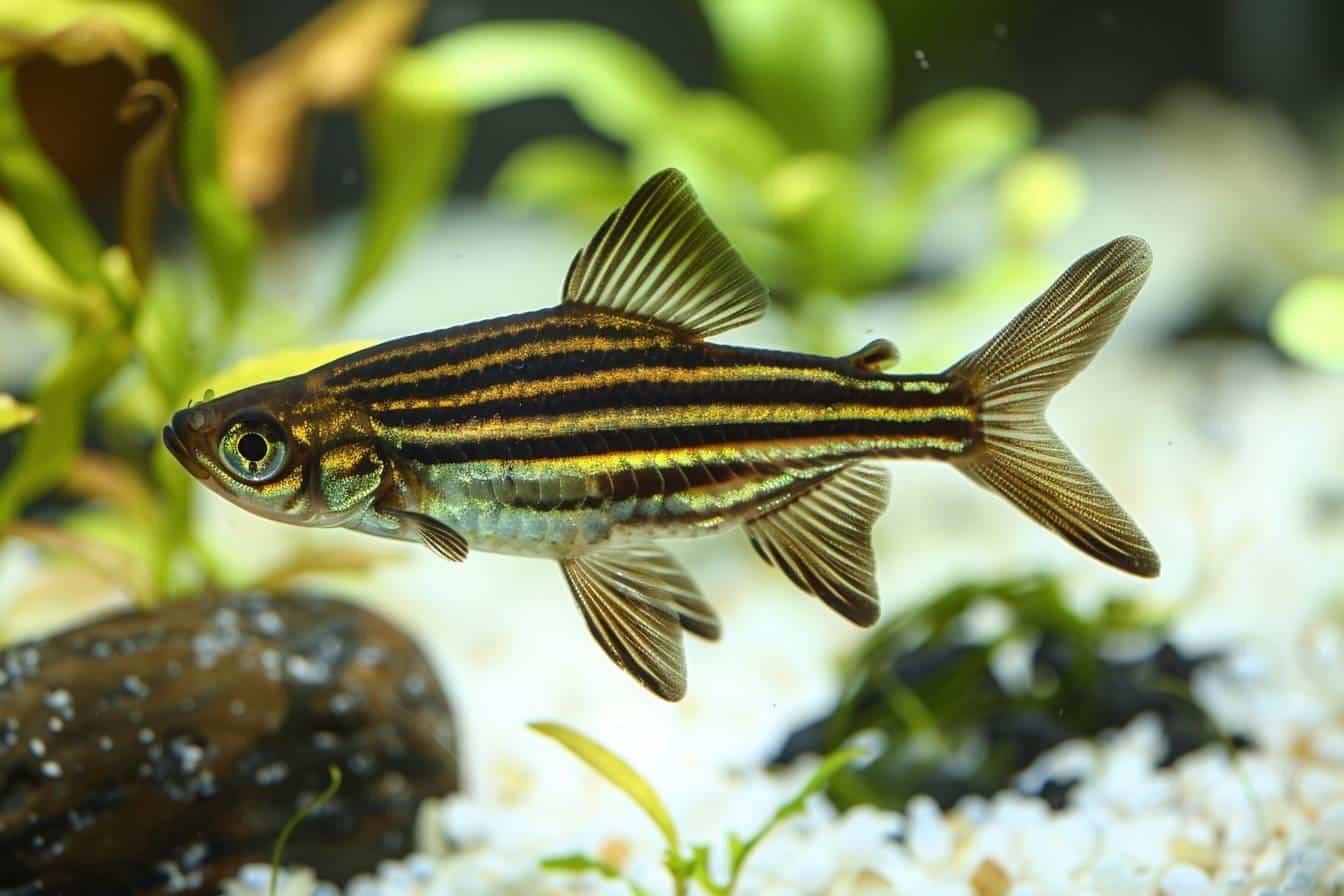The article in brief
Breeding zebra pleco is an exciting challenge for experienced aquarists. Here are the key points:
- Optimal environment : large aquarium, hiding places, specific temperature and pH levels
- A varied diet breeding stock : live, vegetable and granulated
- Rainy season simulation to trigger egg-laying
- Incubation and parental care provided by the male
- Slow growth fry requiring patience and care
Ah, the zebra pleco! A little gem of an aquarium that never ceases to fascinate enthusiasts. Ever since I started out in the pet trade, I've been captivated by this very special species. Let me share with you my knowledge and experience of breeding this extraordinary fish. It's a fascinating subject, but one that requires a great deal of patience and know-how.
The secrets of zebra pleco reproduction
An environment conducive to reproduction
To succeed in reproduction of the zebra plecoFirst and foremost, you have to recreate the ideal conditions of its natural habitat. I remember my first attempt - what an adventure! Here are the key points:
- An aquarium of at least 100-120 litres
- Numerous hiding places (rocks, roots, clay tubes)
- A temperature between 28 and 30°C
- Slightly acidic pH (6-7) and soft water
- A strong current and good oxygenation
These conditions are essential for stimulating the reproductive instincts of our little zebra fish. Remember, these fish are native to the Amazon basin, a rich and dynamic environment.
Preparing broodstock
Once the home is perfect, we need to prepare our future parents. And the key is? Quality food! I've found that varying your meals works wonders. Choose :
- Live food (mud worms, mosquito larvae)
- Fresh vegetables (spinach, courgettes)
- High-quality granules
This rich diet will boost egg production in females and vitality in males. It's a bit like preparing athletes for the Reproduction Olympics!
The onset of egg-laying
This is the crucial moment. To trigger egg-laying, there's nothing like simulating the rainy season. What's the best way? By changing the water regularly. I've seen impressive results by changing up to 50% of water every 2-3 days for a week. It takes a lot of patience, but what a joy it is to see the first signs of a cure!
The miracle of aquatic life
The nuptial dance and egg-laying
When the conditions are right, the show begins. The male, like a zealous estate agent, prepares and defends the egg-laying site. He then attracts the female in a captivating aquatic ballet. The laying that follows is a magical moment: 7 to 20 eggs are deposited in the chosen hiding place. This is when the male's real work begins!
Incubation and hatching
The zebra pleco male is an exemplary father. He guards and ventilates the eggs for around a week, ensuring constant oxygenation. They hatch after 5 to 7 days at 28°C. It's still a moment of wonder for me, even after all these years. The larvae remain in their refuge for 10 to 14 days, while their yolk sac is absorbed.
The first steps of the fry
Once the yolk sac has resorbed, the fry embark on their first great adventure: the search for food. This is a crucial moment when your help is vital. Here is a short guide to the first meals:
| Age of fry | Type of food | Frequency |
|---|---|---|
| 1-2 weeks | Freshly hatched artemia nymphs | 4-5 times a day |
| 2-4 weeks | Microworms, decapped adult artemia | 3-4 times a day |
| 1-2 months | Small granules, very finely grated vegetables | 2-3 times a day |
Remember, these little ones grow slowly. It takes around 18 months for them to reach 6 cm. Patience really is the cardinal virtue of the zebrafish breeder!

The challenges of breeding zebra pleco
Breeding zebra plecos is no picnic, believe me! It's a bit like raise Ancistrusonly more complex. Here are some of the challenges you'll face:
Late sexual maturity
Patience is the key with these fish. They only reach sexual maturity at around 2-3 years, and grow to around 6-7 cm. That's a long time, I know! But it's worth the wait. In the meantime, you can hone your aquarium skills and create the perfect environment for your future breeders.
Subtle sexual dimorphism
It's not always easy to tell the difference between males and females. Males are generally larger and have more developed odontodes (small spines). But it takes a trained eye. It took me a long time to spot these differences, and I still get them wrong sometimes!
Breeding group management
To optimise your chances of reproduction, it is advisable to maintain a ratio of 2-3 females to 1 male. It may sound simple, but when you can't tell the sexes apart, it can be a real headache! Not to mention managing territories and possible rivalries. It's a bit like managing an aquatic roommate!
In the end, breeding zebra pleco is a real challenge, but so rewarding. Every time I see new fry, I feel like a proud grandfather! It's a unique experience that requires patience, dedication and a bit of luck. But when you succeed, what a reward! Don't hesitate to embark on this adventure, you won't regret it.
External sources :
